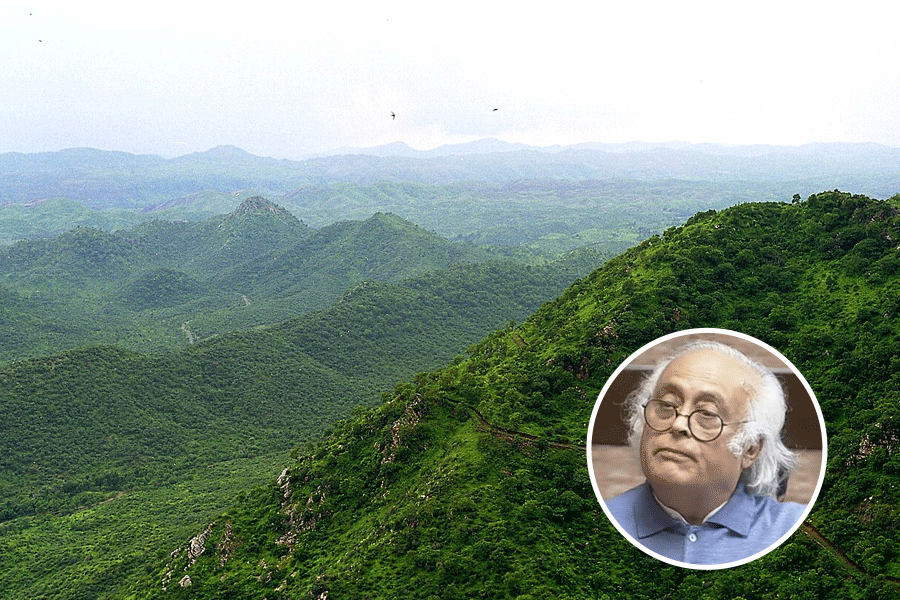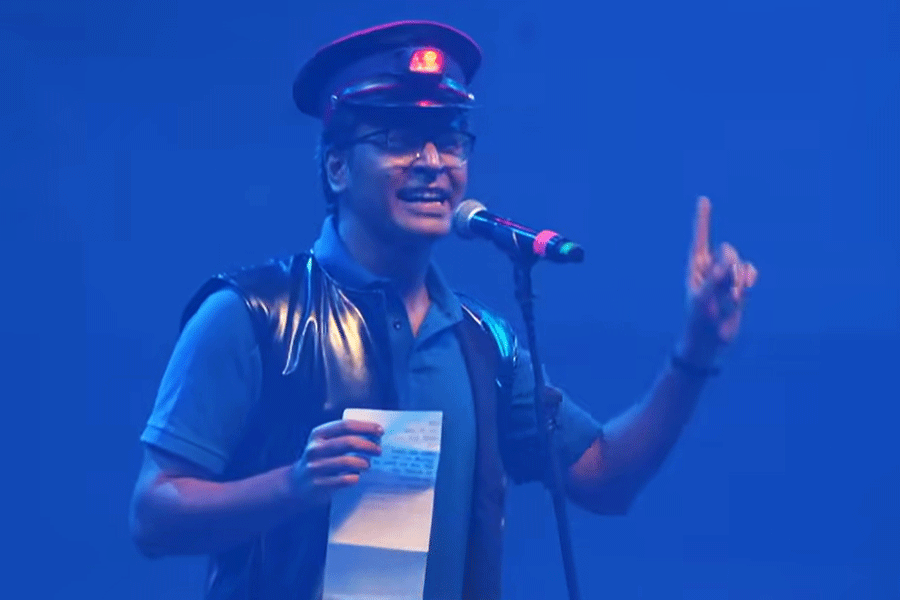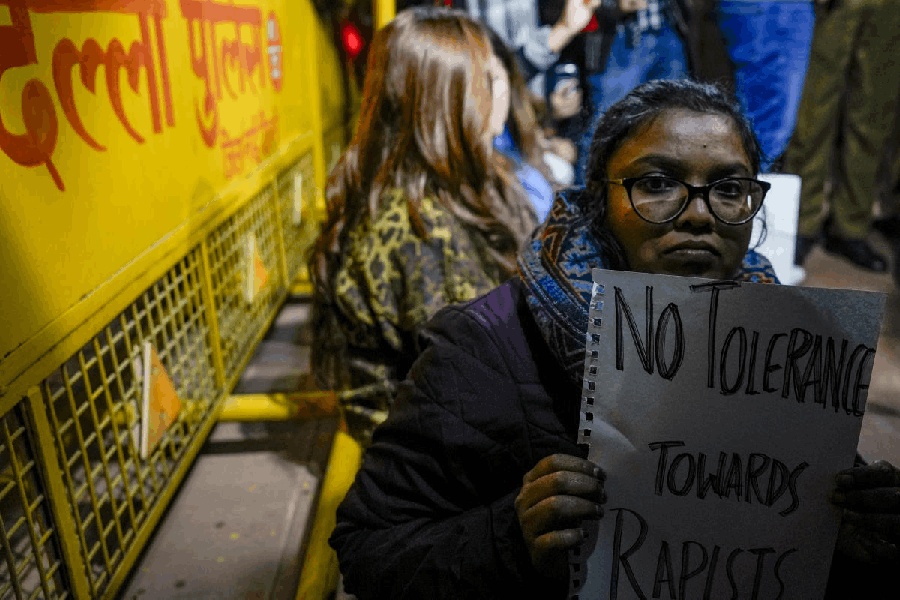 |
Monu conquers the bulge of the 20-foot Choto Overhang with practised ease ? moving smoothly from hand-hold to hand-hold, foot-hold to foot-hold, and re-using hand-holds as foot-holds. Pressing the balls of the four fingers of his right hand on a minuscule ledge, he pulls himself up and then turns his hand around to press down on the ledge with the edge of his palm alongside his thumb and again levers himself up.
I watch with concentration from the foot of the rockface, where I am positioned as spotter. In case he slips and falls, I am to break his fall with my body. But Monu is a superb rock climber and the lead climber among the three of us. This rock, despite being an overhang, is simply a warm-up for him ahead of the 40-foot Angkami and 35-foot Shakuni faces with their exposed routes peppered with tiny pinch and crimp holds and treacherous traverses.
Above us, on a flat rock, Anita is doing stretching exercises. As Monu completes his climb, I clamber up some boulders on the side and rejoin her. ?C?mon, no need for stretching. I want to warm up on the Staircase,? I say and set off for what qualifies as a nursery rock ? for beginners. The name is a dead giveaway ? the Staircase is full of large holds for the hands and feet and it is a sloping rock face rather than vertical.
I feel primed for climbing without stretching because of the mile-long hike up the hillside to Breakfast Point, the rocky area to which the upward trail from the village leads. It is so named because, in mid-winter, rock climbing courses begin their climbing early in the morning and meet for breakfast here. We, however, have come up after a leisurely breakfast because West Bengal?s short winter is long over and we are here for the ?Doler practice? ? a time-honoured tradition among Bengal?s rock climbers. Dol or Holi is traditionally the last date on which rock climbers go to Susunia Hills in Bankura for climbing. After that, the rocks become too hot in the daytime and the snakes begin to emerge from hibernation.
I do the 28-foot Staircase twice. The first time, I go up hugging the face on the right where the slope is gentlest and an adjoining rockface provides a sense of security. Then I shift to the left of the face, where the sense of exposure is greater. I am returning to rock climbing after ages.
?Now can we go and do Manik Rock?? ask my companions, indulgently. This is a rockface, about 20 feet high, just below Breakfast Point, named after the climber who first discovered a route up it. The first section is a vertical climb for about 15 feet. Then the route traverses right onto a roundish, exposed patch of rock for about 18 feet. From here to the top are a few simple moves. Anita opts to do the climb first, and Monu takes position on the top with the rope to belay her. Then Monu free-climbs it, sans rope. When my turn comes, belayed by Anita, I announce, ?I?m going to do it by the vertical route.?
This is a harder, subsequently-discovered route. The crux of the climb is a small vertical crack near the top. I wedge my right foot in, find a hold for my right hand inside the crack, grasp another hold outside with my left hand and lever up, straightening my right knee and placing my weight on the foot. Next, I wedge my left foot above the right one in the crack, shift to two higher hand-holds one after another and straighten the left knee. I withdraw the right foot from the crack and take one easy step up. I am over the top ? in every sense of the term.
Fact File
How to reach: Adra-Chakradharpur Express from Howrah to Bankura Station. Bus to Susunia.
Where to stay: You can pitch tents or use the rest-house at Susunia.
Where to eat: At Jhoru?s roadside eatery opposite the rest-house.
Tip: Take lots of water along on the climb.











